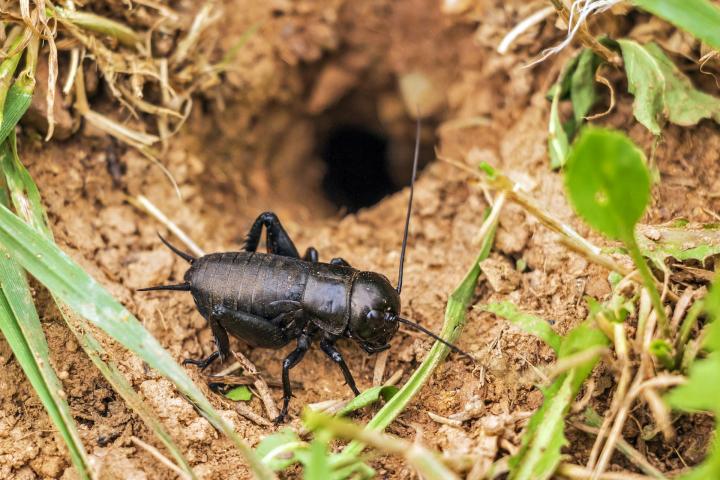
Yes, crickets can be pets (like fish)!
ADVERTISEMENT
I had an old glass terrarium that I wasn't using so I decided to start putting all of the crickets that I find in my house in it! I already had extra substrate, fish food and plants that I could put in with them so I was good to go. So far I've found between 10-15 crickets just this past month. They're super interesting animals.
I use bait shop crickets for bream/bluegill fishing. Potato pieces provide needed moisture and keeps them plump and healthy. I have to buy in Arkansas for use in SE Ks as none sold there. Bluegill go nuts over them,! Hey, fish and people gotta eat too!
Thank you for the information about crickets! Growing up, we lived in the country & I fell asleep with the crickets outside my window. Their chirping was so soothing. Even today, as I now live in a small city, I wait to hear the crickets at night to help me get to sleep. Why buy "artificial sounds" when God has created a beautiful natural creature to calm us & help us to sleep!?!
I’ve never considered keeping crickets as pets. Maybe I’ll try it one day. Sounds fascinating.
They sell cricket water crystals at pet stores and it prevents them from drowning. They are like wet pieces of jello. They love basic goldfish flakes. Flakes and water crystals have most of the nutrients they need to live a long time. Keep babies, tiny babies, with them and they will not get lonely and gives the females something to do and that keeps them very happy. They will live much longer.
When I clean out their terrarium they are very cooperative and all go into a toilet paper tube and wait for me to finish. All of then. They let me move the tube around while I change their paper towels they walk on. Every 3 days I clean their cage. Great critters. I love them.
I have pet house crickets and their life span from experience is over a year. I keep mine in a terrarium with cricket water crystals, feed them oats, goldfish flakes, romain lettuce, little pieces of other vegetables, toilet paper tubes for shelter, and I make sure there are baby crickets in there at all times so it gives the females something to do. They help they molt by dragging food to them. They play with them and even set up a little nursery in a tube for them. They all get along and we ha e one that is named Mommy. She is not going on 3 years old in about 4 months. Their lifespan of a house cricket depends on how well they are taken care of. I have a male cricket that gets out sometimes and when he wants back in the cage he will climb to a certain spot on the wall near the pillow on my bed. He will get onto my hand and I will place him back in the cage. I change their lettuce and vegetables 3 times a day. Mommy will jump at the glass to get my attention to change it early if it had wilted. They make great pets. I am serious. Everybody has them all wrong when it comes to food and lifespan. They are very smart. Remind me of little cats.
Took the words right out of my mouth!!! Has been taking care of his Cricket I found in the house(my little brother got to feed his reptile) bųt it escaped and somehow got into my room, lol. So I felt bad and made it a little home, this is the third one I've seen in my room the other one I tossed out lightly Out My Window but then I see another one that looked just alike to the one I tossed out my window the very next day and then I seen this one today so I decided to keep it!!! I know it's not the same Cricket but just saying WHAT IF!!? LOL
I don't know anything about taking care of it, I have this Box it's a little smaller than a shoebox, half of it with a little dirt and the other half with a lot of fresh grass and a tiny little twig that's going diagonal so she can walk under it with a couple leaves over that for shade and Medicine cap for water.
I heard that they can eat hard dog food because it's full of protein so I put two little pieces in there and she literally grabbed it and moved it around and you can see where she was taking little bites of it but she only ate the very top coat and then goes to the next one. But they are very smarter than people think! At least for a insect, I think it's a female because it has the long thing like there's something sticking out it's butt,lol... but I'm going to read up on more days they eat and put some more dirt and grass in there, a little tiny piece of wood,bark to make it as comfortable as possible.
Now I want to find another one so she can have a friend! Lol && for all I know she might be pregnant! I feel like a dork,lol...
But like I said I was seeing one everyday for 3 days straight and I've never seen one before in the house, today is the third day i seen another one maybe the same cricket is jumping in my window! Lol. Either way I'm trying to give it as much food shelter Comfort water and activities(whatever they do) as I can give it
Thank you for sharing your experience! You had me at Mommy dragging them food. Reminding you of little cats cinched it for me! I'm going to have to try some pet crickets.
Thanks Jason for your great insight on crickets! My daughter brought some home from the pet shop yesterday as she didn't want them to be used as food and she saw that half in the tub had already died. Water crystals needed I think...and you have given me some great ideas on improving their habitat. I suspected that the would make great pets...thank you for all of your tips!









